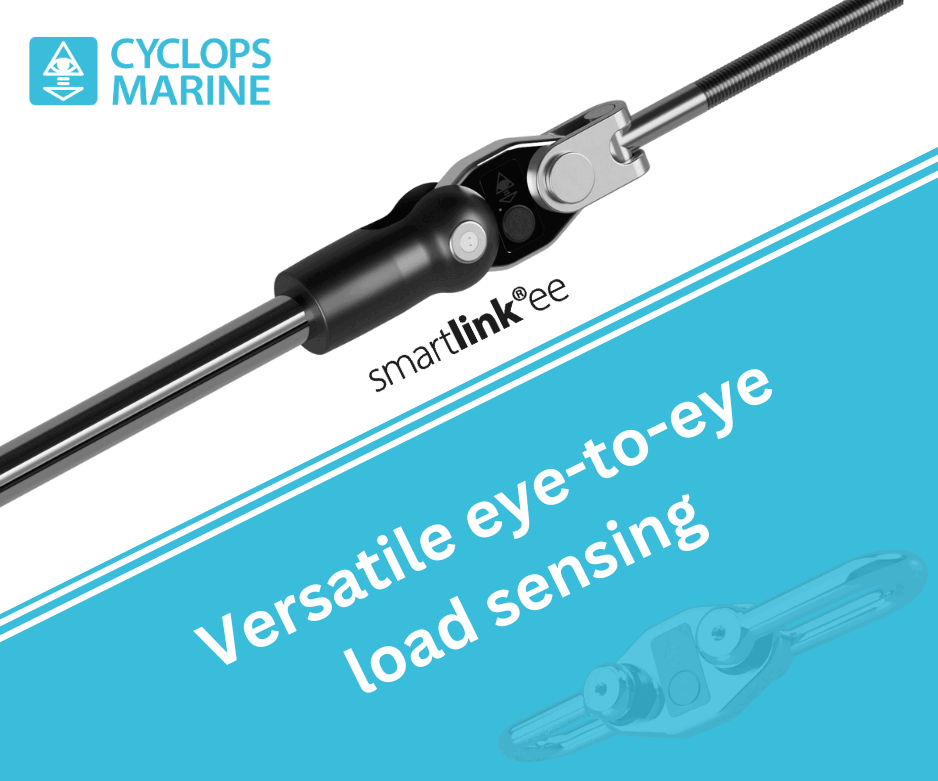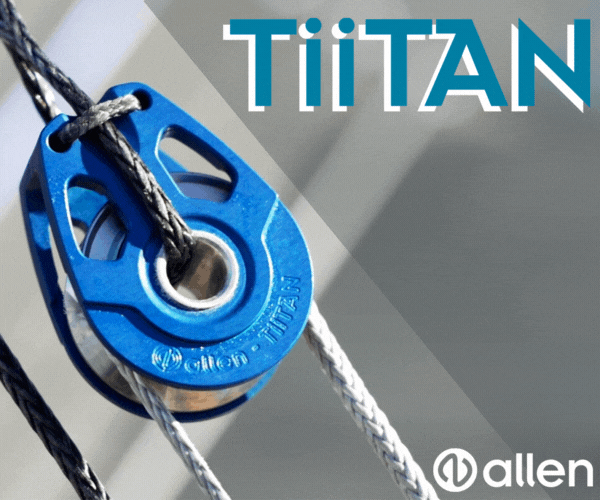-202403121604.gif)












| Laurent Giles 'Jolly Boat' Exeter |
 |
| Laser XD 203301 Upminster |
 |
| J24 (Sail No. 4239) Dartmouth |
 |
List classes of boat for sale |
Increasing mast rake in stronger winds |
Post Reply 
|
Page 123 6> |
| Author | |
Andi 
Newbie 
Joined: 10 Sep 04 Online Status: Offline Posts: 17 |
 Post Options Post Options
 Quote Quote  Reply Reply
 Topic: Increasing mast rake in stronger winds Topic: Increasing mast rake in stronger windsPosted: 10 Sep 04 at 12:35pm |
|
The accepted wisdom is that raking the rig back in higher wind strengths depowers it and/or makes the boat more balanced. No-one has explained this to my satisfaction. I sail an RS200 by the way. When it's windy ( I'm talking about over-powered to the point where one is sheeting out the main regularly to keep the boat flat ) the main forces on the mainsail are ore towards the leech and as this is further aft than the usual centre of effort I should have thought that raking the mast forward would bring the centre of effort and the centre of lateral resistance from the foils more in balance. I know all the arguements about the jib slot being opened, the spreader angle changing and the jib fairleads being effectively raised so reducing jib leach tension but all of the these are miniscule effects when compared to the mast shape control caused by block to blocking the kicker. Can any one help? I've sailed all this year on one set of rig settings and have not noticed any difference in performance - we always come somewhere between 20-33% back form the winning boat at major events. Any info welcome - Andi ( PS sorry about the duplicate message in the wrong category ) |
|
 |
|
Stefan Lloyd 
Really should get out more 
Joined: 03 Aug 04 Online Status: Offline Posts: 1599 |
 Post Options Post Options
 Quote Quote  Reply Reply
 Posted: 10 Sep 04 at 2:06pm Posted: 10 Sep 04 at 2:06pm |
I've never read a convincing explanation as to why increased rake de-powers, but it works. Why not try it next time it is breezy? How do you hope to get better if you won't experiment with different rig settings, or at least copy the ones the winning boats use? |
|
 |
|
Andi 
Newbie 
Joined: 10 Sep 04 Online Status: Offline Posts: 17 |
 Post Options Post Options
 Quote Quote  Reply Reply
 Posted: 10 Sep 04 at 2:32pm Posted: 10 Sep 04 at 2:32pm |
|
My point is that in the past I have changed mast rake in different conditions like every one else. This year, 2004 I have made a decision not to and we don't seem to have made any loss in windy conditions in fact our best result this year - 8th overall was in a very windy Winter championship sailed in 30mph winds using what most people would call light wind mast rake. I'm not saying raking the rig doesn't work, I'm saying I don't know why it does and no-one ( including the experts I have asked ) can tell me why it should work ( at least not in a way that makes sense to me - and I have a very strong science background ) - Andi |
|
 |
|
JimC 
Really should get out more 

Joined: 17 May 04 Location: United Kingdom Online Status: Offline Posts: 6649 |
 Post Options Post Options
 Quote Quote  Reply Reply
 Posted: 10 Sep 04 at 2:49pm Posted: 10 Sep 04 at 2:49pm |
The truth is that boat tune really doesn't make very much difference. Your position in the fleet - any fleet from the tightest one designs to the most open box rules - is primarily defined by how good a sailor you are. Boat speed just represents a place or two each way. At the top of the fleet of course a place or two can be critical - the difference between 1st and 2nd. You beat the guys you would normally beat in HW while your mast is set up for lighter stuff because you're a better sailor than them in heavy weather. What tune might make a difference is between you and that bloke you're always scrapping with. The other thing that everyone always forgets is that there is no scientific rule that says the most talented sailor must have the best tuned boat, but the best sailors boat is the one everyome wants to get the settings off. |
|
 |
|
Andi 
Newbie 
Joined: 10 Sep 04 Online Status: Offline Posts: 17 |
 Post Options Post Options
 Quote Quote  Reply Reply
 Posted: 10 Sep 04 at 3:04pm Posted: 10 Sep 04 at 3:04pm |
|
A lot of good points in what you say. My question about mast rake wasn't really about trying to improve our results - we've got a list as long as your arm of areas we need to improve; I was really trying to get my head round WHY raking the rig works ( if it does ) and what are the feedback effects evident in the way the boat handles and experienced by the helm and crew that might confirm that the rig change was worth doing. - Andi
|
|
 |
|
redback 
Really should get out more 

Joined: 16 Mar 04 Location: Tunbridge Wells Online Status: Offline Posts: 1502 |
 Post Options Post Options
 Quote Quote  Reply Reply
 Posted: 10 Sep 04 at 5:02pm Posted: 10 Sep 04 at 5:02pm |
|
I'd love to know why too, but remember keeping the boat level makes a huge difference to weather helm - more than mast rake, rig tension or whatever. One significant way of affecting the relationship between rig and hull is to move the lateral resistance back - swing the centreboard back. This also reduces the leverage and area, both commendable. Even though it doesn't move it back, it helps on a Laser to raise it. I wonder if by raking the mast back it puts more tension on the jib luff? Further up the forum somebody said boat tune only makes a little difference to your fleet position. I agree in most conditions, but in a real big blow it can make the difference between getting round or repeated capsizes and in some classes it makes the difference between keeping the stick in the boat or breaking it. |
|
 |
|
redback 
Really should get out more 

Joined: 16 Mar 04 Location: Tunbridge Wells Online Status: Offline Posts: 1502 |
 Post Options Post Options
 Quote Quote  Reply Reply
 Posted: 10 Sep 04 at 5:09pm Posted: 10 Sep 04 at 5:09pm |
|
I sail a 4000 and it is a great strong wind boat - if the tune is right. If the sail is too full it flogs and this really slows the boat. My rig is adjustable enough to almost completly flatten the top third of the sail and open the leaches which means that in winds of 30mph the sail isn't flogging and the boat really motors. I would have thought the RS200 is equally capable - the RS400 certainly is.
|
|
 |
|
ChrisJ 
Far too distracted from work 
Joined: 07 May 04 Location: United Kingdom Online Status: Offline Posts: 337 |
 Post Options Post Options
 Quote Quote  Reply Reply
 Posted: 10 Sep 04 at 5:20pm Posted: 10 Sep 04 at 5:20pm |
|
Is it: Rake the mast back in strong winds that helps in strong winds? OR is it: Rake the mast forward in light winds helps in light winds? Which is the "normal" setting for the boat? The normal setting for sailing is the light/medium wind setting, because that is the general winds we have in the UK. But is this the best setting for the boat?
If the strong wind setting is the correct one (wind travels across boundaries at right angles, the nearer vertical leach helps with the wind exit from the sail, this also helps to prevent the wind flowing up the sail and helps with it flowing horizontal), then raking the mast forward in light winds helps because: Less wind means more power is needed. This means a straighter mast held in place by the spreaders and rig tension. Closed slots to keep as much wind as possible doing good work etc. |
|
 |
|
Andi 
Newbie 
Joined: 10 Sep 04 Online Status: Offline Posts: 17 |
 Post Options Post Options
 Quote Quote  Reply Reply
 Posted: 10 Sep 04 at 6:58pm Posted: 10 Sep 04 at 6:58pm |
|
I have tried moving the centre-board back as an easy-to-do alternative way of making heavy weather beating more effective. There is a very definate reduction in pointing angle or maybe it's just the tracking angle - either way we certainly dropped lower and lower compared with other boats. Angling the centre-board back moves the centre of lateral resistance aft - this is the opposite of moving the centre of effort in the sail plan back so perhaps angling the board back needs to be coupled with super mast rake settings to get things back in balance or maybe the small reduction in foil area is responsible for the poor course made good. I have not tried the combination of angled back c/b and super mast rake aft as in an RS200 the boom gets so low that the boat is hard to sail. I did have a Topper Spice for a while and the accepted wisdom in that class was to rake the mast and raise the dagger board as much as 30% in high wind so maybe there is something in this idea ( it's just that no-one does it in the 200s ( yet! ) ) I find that as the wind pipes up we point higher and higher until we reach a point where we stall the foils and then we have to change mode completely and let the jib out a bit. The extra fullness in the eased jib creates so much power that the main needs to be dumped a long way out to keep the boat up-right. This occurs about 25mph wind, after this point we are great at surviving but are well off the pace with a very poor pointing angle. - Andi
|
|
 |
|
Garry 
Really should get out more 

Joined: 18 Apr 04 Location: United Kingdom Online Status: Offline Posts: 536 |
 Post Options Post Options
 Quote Quote  Reply Reply
 Posted: 10 Sep 04 at 7:46pm Posted: 10 Sep 04 at 7:46pm |
|
Have you tried moving the jib lead aft (further out) rather than easing the jib combined with increasing the luff tension (but not the rig tension)? Thus twisting the jib leech open at the top. Also is the reason you're pointing higher, because you're pinching, rather than easing a flattened main?
|
|
|
Garry
Lark 2252, Contender 298 www.cuckoos.eclipse.co.uk |
|
 |
|
Post Reply 
|
Page 123 6> |
| Forum Jump | Forum Permissions  You cannot post new topics in this forum You cannot reply to topics in this forum You cannot delete your posts in this forum You cannot edit your posts in this forum You cannot create polls in this forum You cannot vote in polls in this forum |
Copyright ©2001-2010 Web Wiz
Change your personal settings, or read our privacy policy











 Printable Version
Printable Version Delicious
Delicious Digg
Digg Facebook
Facebook Furl
Furl Google
Google MySpace
MySpace Newsvine
Newsvine reddit
reddit StumbleUpon
StumbleUpon Twitter
Twitter Windows Live
Windows Live Yahoo Bookmarks
Yahoo Bookmarks Topic Options
Topic Options